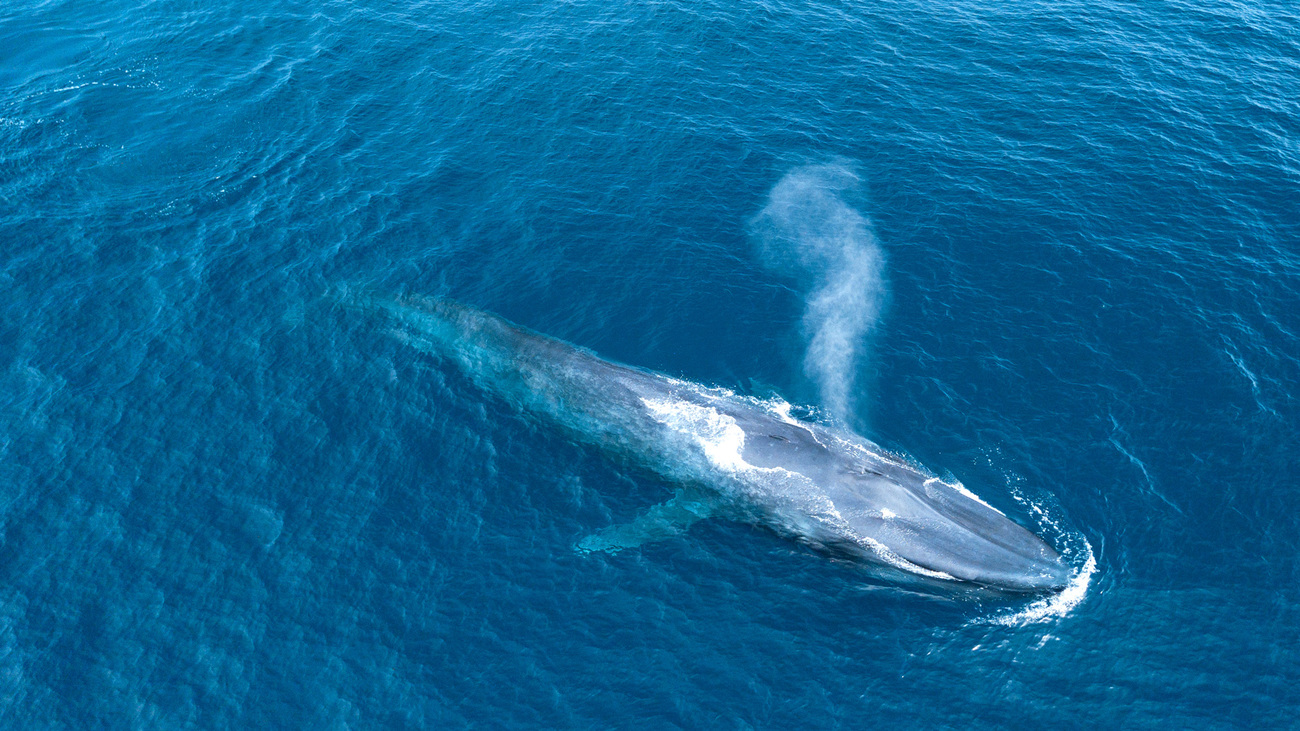Updates
How IFAW has helped animals and people during the Ukraine crisis
Learn morethe future of blue whales is in the hands of Sri Lanka

The largest animal ever to exist on Earth, the magnificent and iconic blue whale, was previously hunted almost to the brink of extinction by commercial whaling activities and remains an endangered species today. The blue whales found in Sri Lankan waters, in the Northern Indian Ocean, are non-migratory and believed to be resident in these waters year-round, but the increasing pressures of entanglement, plastic pollution, human-made ocean noise and, critically, ship strikes, threaten the survival of this population.
One of the wonderful curiosities that makes these endangered whales unique is that they don’t make the annual migration to cold, polar waters to feed, which is seen with other blue whale species. Unfortunately, staying in the incredibly productive waters off Sri Lanka throughout the year also puts these whales right in the middle of an international shipping lane. This means that collisions with ships, or ‘ship strikes’, are the key threat to the northern Indian Ocean blue whale population.
The number of blue whales killed by ships off Sri Lanka is not known, but more than 200 ships transit this area each day, and the risk of a collision has been shown to be among the highest in the world. Reported deaths are only a small fraction of the number of whales killed.
I haven’t had the opportunity to visit Sri Lanka yet, but friends and IFAW colleagues that have been whale watching there or been involved in the research surveys we completed in 2014 and 2015, were captivated by the number of blue whales they saw relatively close to Sri Lanka’s southern coast. Such close encounters with these ocean leviathans are the experience of a lifetime, but the future of local whale watching tours is also at risk if these whales continue to be struck by ships.
The research surveys completed by IFAW, with WTI, Biosphere Foundation, University of Ruhuna (Sri Lanka), Raja and the Whales and University of St Andrews (UK), collected data on offshore blue whale distribution in this area. These surveys confirmed that if shipping were to transit a mere 15 nautical miles south (offshore) of the current routes, then the risk of ship strikes to blue whales would be reduced by a staggering 95%.
Given the enormity of this situation for these endangered whales and the straightforward solution that exists, IFAW and NGO partners have sent an urgent letter addressed to several officials in the Sri Lankan government, including the President of Sri Lanka. The letter expresses extreme concern about the significant safety issues related to the current shipping lane, references strong support from the shipping industry to re-route the shipping lane and sets out the clear scientific consensus on what needs to be done to protect blue whales from ship strikes.
This small tweak to the location of the shipping lane would make a huge difference to the conservation status of these whales and would benefit people—the risk of a serious accident involving whale watching or coastal fishing vessels would also be substantially reduced.
IFAW has been working on this issue for many years now, and our past meetings with Sri Lankan government officials have always been positive and enthusiastic. The survival of this whale population depends on securing the political will to make these changes on the water. Making this small adjustment to the current shipping lane will benefit Sri Lanka’s whales, coastal fishing communities and tourism industry. We are calling on the Government of Sri Lanka to act now, before it is too late.
-Sharon Livermore, IFAW Director of Marine Conservation
Every problem has a solution, every solution needs support.
The problems we face are urgent, complicated and resistant to change. Real solutions demand creativity, hard work and involvement from people like you.
Unfortunately, the browser you use is outdated and does not allow you to display the site correctly. Please install any of the modern browsers, for example:
Google Chrome Firefox Safari